| MARCH 2019 |
|
4 shows in T˘ky˘ (Kabukiza, National Theatre, EX THEATER), 2 in Ky˘to (Minamiza), 1 in Fukuoka (Hakataza), 1 in ďsaka (Orix Theater), 1 in Sapporo (Waku Waku Holiday Hall) and 2 tours (Nakamura Shichinosuke Special Tour, Zenshinza)!
|
| Kabukiza (T˘ky˘) |  |
| Dates | 3 ~ 27 March 2019 Sangatsu ďkabuki March Grand Kabuki |
| MatinÚe |
Keisei Hangonk˘
|
| Evening |
ďmi Genji Senjin Yakata Benten Musume Meo no Shiranami
|
| Casting |
Living National Treasure Kataoka Nizaemon, Matsumoto Haku˘, Nakamura Jakuemon, Matsumoto K˘shir˘, Ichikawa Ennosuke, Nakamura Ganjir˘, Kataoka Takatar˘, Ichikawa Sadanji, Nakamura Kinnosuke, Band˘ Yajűr˘, Nakamura Karoku, Kataoka Hidetar˘, ďtani Tomoemon, Ichikawa Komaz˘, Ichikawa Monnosuke, Nakamura Kikaku, Ichikawa En'ya, Ichikawa Emisabur˘, Ichikawa Emiya, Ichikawa Juen, Matsumoto Kingo, Band˘ Shűch˘, Ichikawa K˘tar˘, Nakamura Yonekichi, ďtani Hirotar˘, Nakamura Takanosuke, Nakamura Tanenosuke, Kataoka Sennosuke, Nakamura Kantar˘, Arashi Kitsusabur˘, Kataoka Matsunosuke, Terajima Maholo |
| Comments |
The usual March Kabuki performances at the Kabukiza:
|
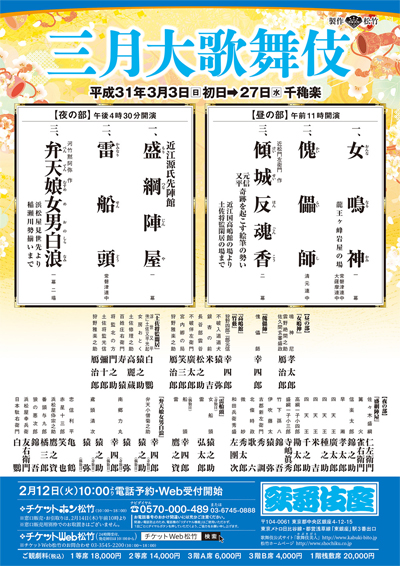 |
| National Theatre (T˘ky˘) |
| Dates | 3 ~ 27 March 2019 |
| Program | |
| Casting |
Nakamura Senjaku, Onoe Kikunosuke, Nakamura Matagor˘, Nakamura Baishi, Nakamura Kash˘, Nakamura Mantar˘, Nakamura Toranosuke |
| Comments |
The usual March Kabuki performances at the National Theatre.
|
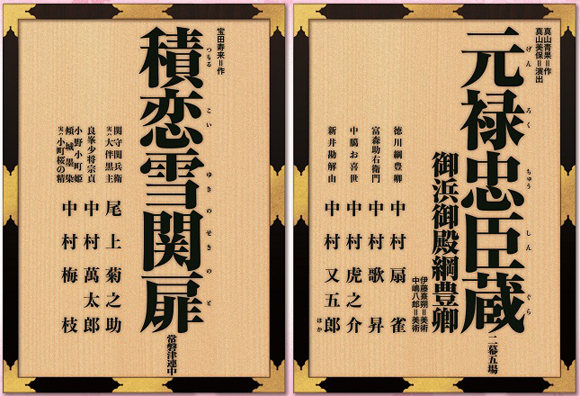 |
|
|||
| Dates | 2 ~ 26 March 2019 Band˘ Tamasabur˘ Tokubetsu K˘en Band˘ Tamasabur˘ Special Performances |
||
| Program |
Dan no Ura Kabuto Gunki (Akoya) Keisei Yuki no Yoshiwara |
||
| Casting |
Living National Treasure Band˘ Tamasabur˘, Band˘ Hikosabur˘, Band˘ Kamez˘, Nakamura Kichinoj˘ |
||
| Comments |
A special Kabuki program in Ky˘to at the Minamiza starring the amazing Living National Treasure onnagata Band˘ Tamasabur˘.
|
||
|
|||
| Dates | 3 ~ 24 March 2019 Sangatsu Hanagata Kabuki March Young Actors Kabuki |
||
| Program |
Waki Noboru Mizu-ni Koi Taki (Koi Tsukami) |
||
| Casting |
Kataoka Ainosuke, Onoe Matsuya, Nakamura Kazutar˘, Kamimura Kichiya, Ichikawa Omez˘, Sawamura S˘nosuke, ďtani Keiz˘, Ichimura Kitsutar˘ |
||
| Comments |
Young actors performing at the Hakataza to celebrate the 20th anniversary of the opening of the Hakataza.
|
||
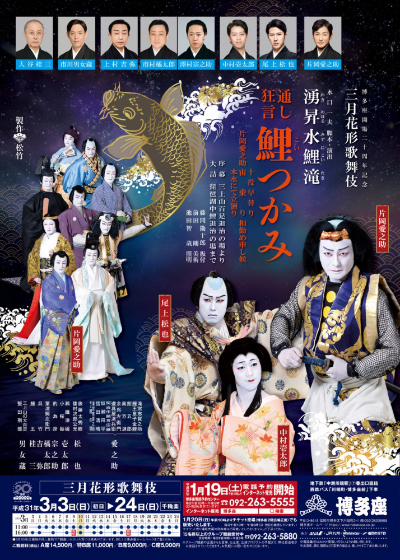 |
| Nakamura Shichinosuke Special Tour | |
| Dates | 2 ~ 19 March 2019 Nakamura Shichinosuke Tokubetsu K˘en Nakamura Shichinosuke Special Performances |
| Program |
Geidan Sumidagawa Chigusa no Nuregoto |
| Casting |
Nakamura Shichinosuke, Nakamura Tsurumatsu, Nakamura Kosabur˘, Nakamura Ich˘, Sawamura Kunihisa |
| Comments |
The Spring Tour of Nakamura Shichinosuke with performances in 12 cities. |
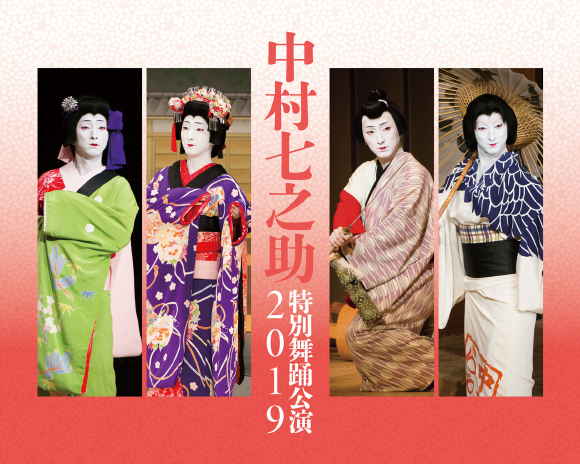 |
| EX THEATER (T˘ky˘) |  |
| Dates | 22 February ~ 10 March 2019 Roppongi Kabuki Roppongi Kabuki |
| Program |
Rash˘mon |
| Casting | |
| Comments |
Third edition of the Roppongi Kabuki performances at the EX THEATER. Based on Akutagawa Ryűnosuke's short story "Rash˘mon", the stage direction is done by the famous movie director Miike Takashi, an expert in violent and bizarre movies who worked twice with Ichikawa Ebiz˘ for the movies "Hara-Kiri: Death of a Samurai" (2011) and "Over your Dead Body" (2014). The guest star of "Rash˘mon" is Miyake Ken. |
| Orix Theater (ďsaka) |  |
| Dates | 13 ~ 17 March 2019 Roppongi Kabuki Roppongi Kabuki |
| Program |
Rash˘mon |
| Casting | |
| Comments |
Third edition of the Roppongi Kabuki performances, started in T˘ky˘ at the EX THEATER in February 2019 and now staged in the city of ďsaka at the Orix Theater. Based on Akutagawa Ryűnosuke's short story "Rash˘mon", the stage direction is done by the famous movie director Miike Takashi, an expert in violent and bizarre movies who worked twice with Ichikawa Ebiz˘ for the movies "Hara-Kiri: Death of a Samurai" (2011) and "Over your Dead Body" (2014). The guest star of "Rash˘mon" is Miyake Ken. |
| Waku Waku Holiday Hall (Sapporo) |
| Dates | 21 ~ 24 March 2019 Roppongi Kabuki Roppongi Kabuki |
| Program |
Rash˘mon |
| Casting | |
| Comments |
Third edition of the Roppongi Kabuki performances, started in T˘ky˘ at the EX THEATER in February 2019 and now staged in the city of Sapporo in Hokkaid˘ at the Wakuwaku Holiday Hall (Sapporo Civic Hall). Based on Akutagawa Ryűnosuke's short story "Rash˘mon", the stage direction is done by the famous movie director Miike Takashi, an expert in violent and bizarre movies who worked twice with Ichikawa Ebiz˘ for the movies "Hara-Kiri: Death of a Samurai" (2011) and "Over your Dead Body" (2014). The guest star of "Rash˘mon" is Miyake Ken. |
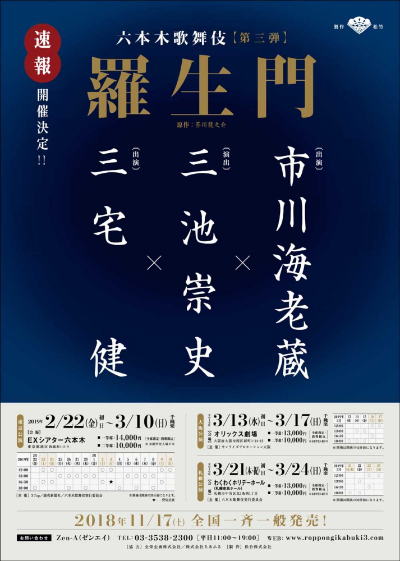 |
| Zenshinza Tour | |
| Dates | 13 March ~ 27 April 2019 |
| Program |
Ura Nagaya S˘d˘ki |
| Casting |
Kawarasaki Kunitar˘, Arashi Yoshisabur˘, Fujikawa Yanosuke, Matsunami Kihachir˘, Tadamura Shin'ya |
| Comments |
A March and April tour all over Japan for the Zenshinza troupe. "Ura Nagaya S˘d˘ki", which was written by the veteran movie director Yamada Y˘ji and was premiered in May 2017 at the National Theatre, is based on two famous rakugo stories, "Rakuda" and "Ido no Chawan". |
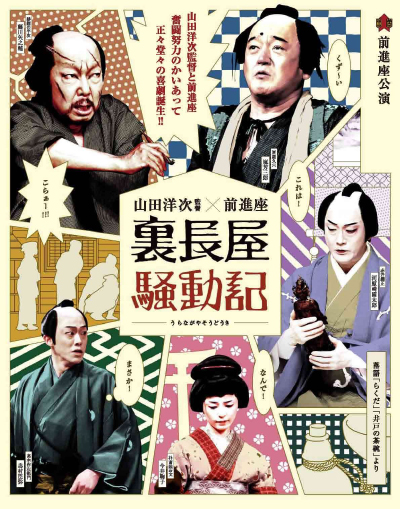 |
|
|
| Contact | Main | Top | Updates | Actors | Plays | Playwrights | Programs | Links | FAQ | Glossary | Chronology | Illustrations | Prints | Characters | Derivatives | Theaters | Coming soon | News |
